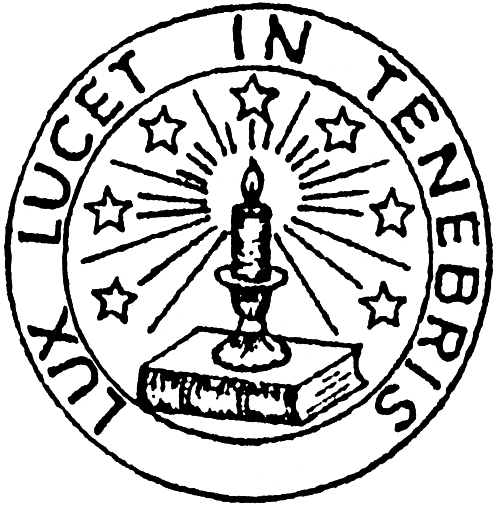

 |
HistoryFounded in the Middle Ages The Waldensian Church originated with the preaching of the merchant Valdo (Waldo of Lyons, from whom the church’s name originates), 1140-1217. He lived during the same period as Saint Francis of Assisi (1181 or 1182–1226). Like Francis, Waldo also believed in the value of the evangelical poverty of the early church and, after a profound spiritual crisis, gave all his assets to the poor in order to freely preach the gospel. The movement, known as “The Poor of Lyons” in France and “The Poor Lombards” in Italy, continued to spread throughout Europe. But in a short time it was accused of heresy and thereafter participants were repressed and persecuted by the civil and religious authorities. Despite very difficult times and the violence of the Inquisition of the Catholic Church, the movement continued to evangelize and succeeded in establishing an important community in the western Alps of the Piedmont, the South of France, Germany, and even in southern Italy (in Calabria). Their itinerant preachers were called “Barba” (a dialectical word for “uncle”, meaning a distinguished person), from which derived “Barbetti” (followers of the Barba), a popular name used until recent times in Piedmont to indicate Waldensians. The Reformation The Waldensian movement joined the newly initiated European Reformation in 1532. Local preachers led their worship services and celebrated the sacraments. From that time, the church became Protestant in the Presbyterian and Calvinist tradition. But the persecution was not over. Particularly tragic were the massacres of 1655, known as the “Piedmont Easter”, which raised indignant protests in Europe and caused Cromwell’s England to take action. The celebrated poet John Milton wrote of it in his ode, “On the Late Massacre in Piedmont”. Persecution began anew in 1685. The few Waldensian survivors in Piedmont remained committed to their faith but had to take shelter in Switzerland. Only four years later, in 1689, they were able to re-enter their valleys. It was for them, the “Glorious Return”: a community of people composed also of women, the elderly and children, which crossed the Alps, driven not only by the tie to their own land, but also by their vocation of freedom to witness to their Protestant faith. Civil Liberties in 1848 For the entire 18th Century the Waldensians were confined to their territory in the Waldensian Valleys, more or less as the Jews were to their ghetto, as objects of discriminatory legislation that treated them as second-class citizens. They had to wait until the 17th of February 1848 for the Edict of Emancipation, issued by Carlo Alberto, to receive political and civil rights Waldensians in the valleys still celebrate this date yearly with huge bonfires (falό in Italian). A Component of Italian Society In 1948, with the approval of the Democratic and Republican Constitution, a new season of freedom began for the Waldensians. However, the full acknowledgement of the Waldensian Church by the Italian state took place only with the approval of the Intesa (agreement) in 1984. Another very important step in the history of the Waldensian Church was the Pact of Integration with the Methodist Church in 1979. The Union of Methodist and Waldensian Churches became established, governed by a single synod and administered by the same board. The Methodist contribution to the union was very important: the churches of the Wesleyan tradition, had been very active in the process of national unification and had established themselves in various areas of the south of the country, mainly among farmers and laborers. They had opened schools and preschool centers, promoted cooperatives and cultural institutions. The Methodists, moreover, were very active in the campaigns to distribute the Bible. Today Methodists and Waldensians continue their journey of faith together, committed to cultural programs, ecumenical and interfaith dialogue, working for peace and justice, the safeguarding of creation, and hospitality to foreigners. In eight centuries of history the medieval Waldensian movement has passed through suffering, blessings, persecution and opportunities for witness. However, its vocation has remained the same: with its numerous ministries, the Union of Methodist and Waldensian Churches strives to be a meaningful Christian community, as an active and responsible minority in contemporary society. The Waldensians actively committed themselves to defending the principles of religious freedom and Church-State separation, which they were convinced were important to the political and social renewal of the country. They continued to defend themselves from the Risorgimento (the movement for national unity from 1848 to 1870) through the resistance against Fascism and even into the democratic system granted by the Italian Constitution in 1948. In particular, at the end of the Papal State in 1870 and with the unity of Italy, the Waldensian Church was allowed to preach the Gospel in all of Italy. Thereafter, important Waldensian churches and centers were started also in central and southern Italy. Currently the Waldensian Church is spread throughout the nation but still today approximately half of the Waldensians are concentrated in the historical valleys of the Piedmont. Symbols The official symbol of the Waldensian Church is a candle positioned over an open Bible. The historical motto written above the symbol is “Lux Lucet in Tenebris” (A Light Shining in the Darkness). Also very popular among Italian and South American Waldensians, is the Huguenot cross: the symbol of the French (Huguenot) reformation who endured severe persecution. The most tragic event occurred during the night between the 23rd and 24th of August 1572, known in history as the Saint Bartholomew’s Day Massacre. The Huguenot cross is a Maltese cross whose arms are connected; a dove is hung at the base which expresses faith in the Holy Spirit. According to some traditions, at one point in time, there was a tear shaped crystal in place of the dove, to remember the suffering inflicted upon the Huguenots. The author of the following explanation of the relationship between the early Waldensian movement and that of the early Hussites was written by Kevin Frederick, a member of the board of the American Waldensian Society and a former pastor at the Waldensian Presbyterian Church in Valdese, North Carolina. For centuries it has been assumed that the Waldensians directly influenced the Hussite movement and that the Waldensians were forerunners of the followers of Jan Hus. However, in recent decades, source documents from the 13th through the 16th centuries have provided greater clarity about the nature of the relationships between the Waldensians and the Czech Reformers. It is worth noting that there are no source documents written by Czech Waldensians from the 13th and 14th centuries. Scholars have had to draw from other sources of documentation to build an accurate historical picture. These source documents include (1) manuals written by the Catholic Inquisition to instruct inquisitors in their prosecutorial duties; (2) records of specific ecclesial trials written by the inquisitors involved; and (3) other official documents from contemporary governments and kingdoms. |

866-825-3373 | 828-874-3500 local | 828-874-0880 fax | info@waldensian.org



